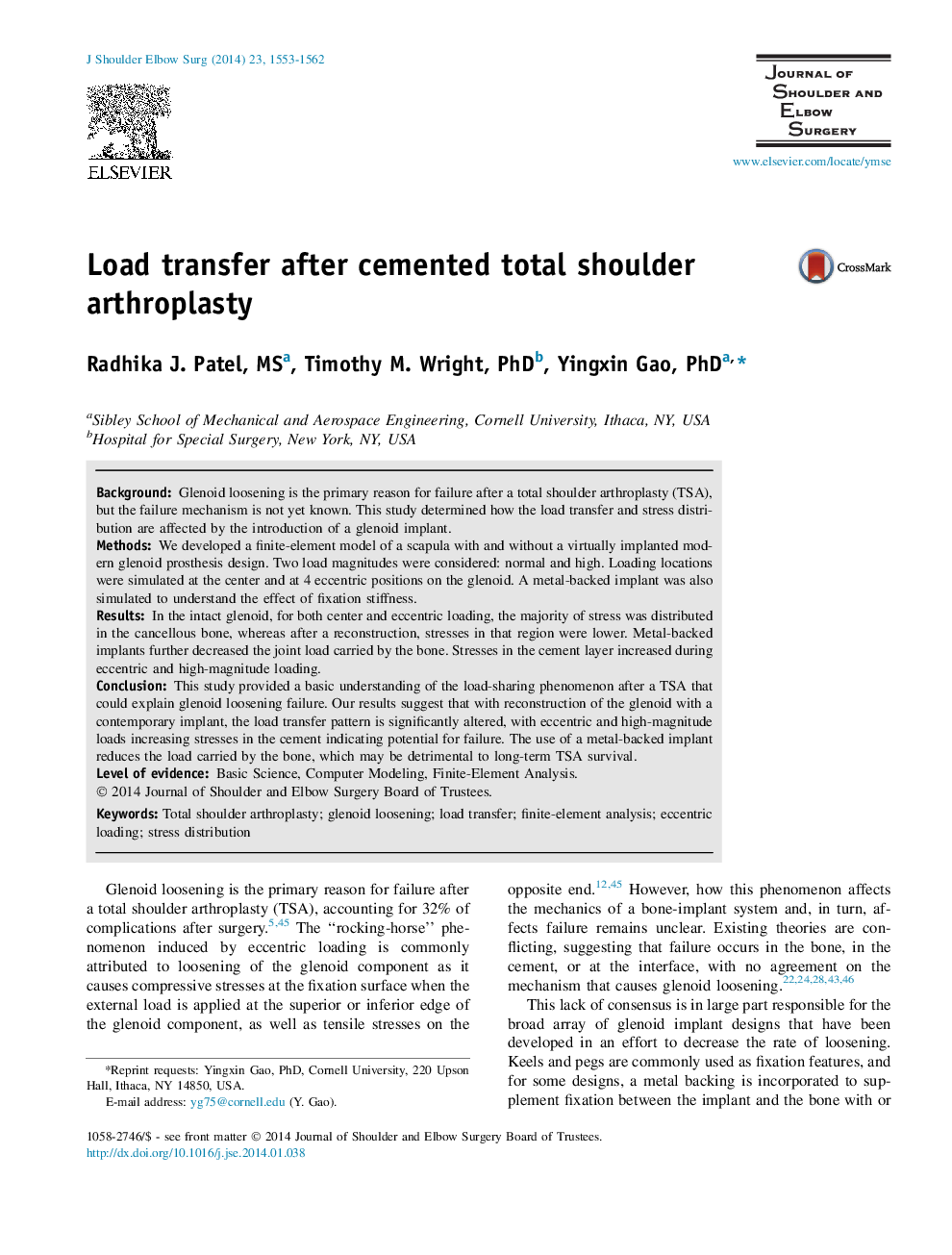| کد مقاله | کد نشریه | سال انتشار | مقاله انگلیسی | نسخه تمام متن |
|---|---|---|---|---|
| 4073781 | 1266990 | 2014 | 10 صفحه PDF | دانلود رایگان |
BackgroundGlenoid loosening is the primary reason for failure after a total shoulder arthroplasty (TSA), but the failure mechanism is not yet known. This study determined how the load transfer and stress distribution are affected by the introduction of a glenoid implant.MethodsWe developed a finite-element model of a scapula with and without a virtually implanted modern glenoid prosthesis design. Two load magnitudes were considered: normal and high. Loading locations were simulated at the center and at 4 eccentric positions on the glenoid. A metal-backed implant was also simulated to understand the effect of fixation stiffness.ResultsIn the intact glenoid, for both center and eccentric loading, the majority of stress was distributed in the cancellous bone, whereas after a reconstruction, stresses in that region were lower. Metal-backed implants further decreased the joint load carried by the bone. Stresses in the cement layer increased during eccentric and high-magnitude loading.ConclusionThis study provided a basic understanding of the load-sharing phenomenon after a TSA that could explain glenoid loosening failure. Our results suggest that with reconstruction of the glenoid with a contemporary implant, the load transfer pattern is significantly altered, with eccentric and high-magnitude loads increasing stresses in the cement indicating potential for failure. The use of a metal-backed implant reduces the load carried by the bone, which may be detrimental to long-term TSA survival.
Journal: Journal of Shoulder and Elbow Surgery - Volume 23, Issue 10, October 2014, Pages 1553–1562
